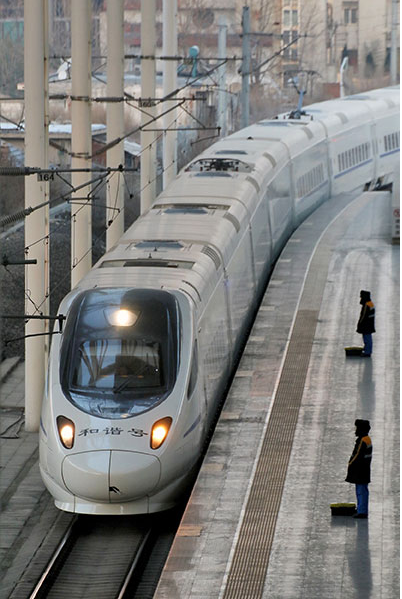
According to the data released by China Railway Corp on Sunday, 6,284 passenger train services now run every day nationwide, with more than 60 percent of them high-speed.The latest adjustment will further increase the capacity of high-speed links between Beijing and Shenyang in Liaoning province, Beijing and Hangzhou in Zhejiang province, and Guiyang in Guizhou province and Shenzhen, among others, chinanews.com reported.Capacity pressure on regular services will also be relieved by additional express trains, the report added, such as between Shanghai and Shaoguan in Guangdong province, Shenzhen and Luoyang in Henan province, Lanzhou in Gansu province and Hefei in Anhui province.
According to China Railway Corp, the country was forecast to have 18,000 kilometers of high-speed railway in operation by the end of 2015, linking all the cities with populations larger than 500,000.From January to August, 1.72 billion journeys were made on the rail network."In 2014, the Beijing-Shanghai high-speed railway transported more than 100 million people, with more than 250 trains running every day," Cai Qinghua, former chairman of Beijing-Shanghai High-Speed Railway Corp, was earlier quoted as saying by Shanghai-based The Paper."Even that capacity cannot meet demand in peak periods. If demand keeps growing at speed, we may need a second Beijing-Shanghai high-speed railway someday," he said.
However, He Huawu, chief engineer for China Railway Corp, dismissed concerns about capacity."There is still enough space to improve," he said. "In the near future, the passenger flow will be split by new railway lines; for example, the Beijing-Kowloon line will ease some of the pressure on the Beijing-Guangzhou and Beijing-Shanghai high-speed railways."In addition, the Beijing-Shanghai line was designed for speeds of up to 350 kilometers an hour, but now the operating speed is only 250 to 300 km/h."We have to calculate the economic feasibility if we increase the speed," he said. "We're collecting data to calculate the additional costs ... and we'll try to figure out an optimal speed that is both economic and meets the increasing demand."